Ceiling stucco
Stucco decor has always been considered a sign of wealth, but in modern interiors, where functionality comes to the fore, it should be used in moderation.
Stucco fits perfectly into antique and classical styles, as well as baroque and rococo, but gypsum elements are usually used to recreate them. Foam plastic is a more budget-friendly solution, and if done carefully, it can replace gypsum: it will be difficult to distinguish it from natural material.
Stucco in ceiling decoration is used for cornices and baseboards. This popular technique allows you to decorate corners and disguise the joints between the wall and the ceiling.
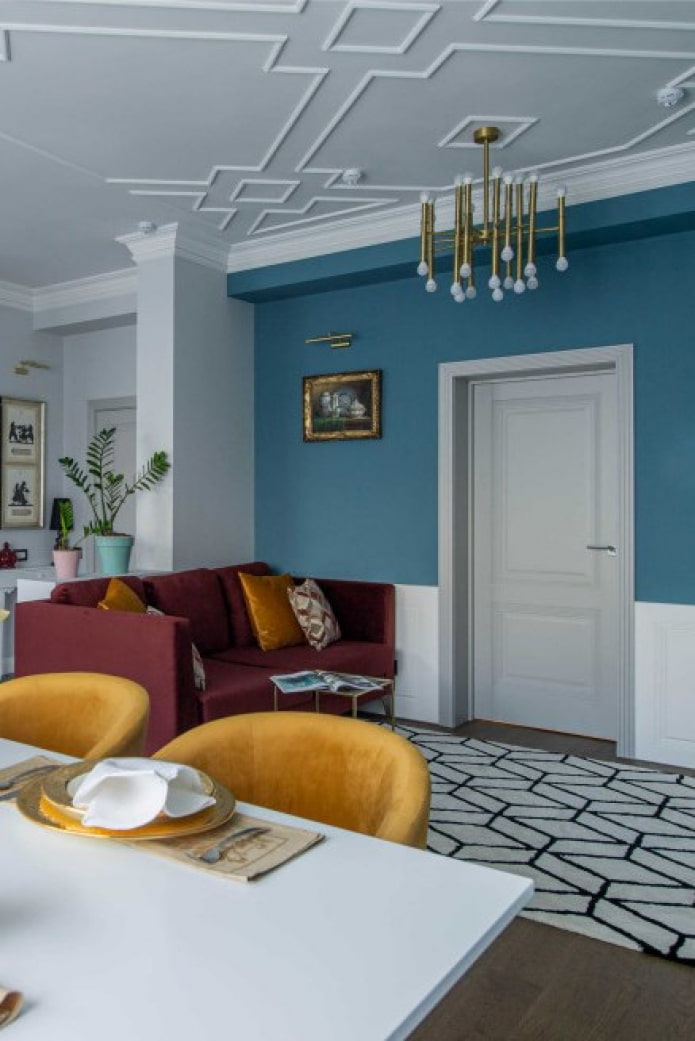
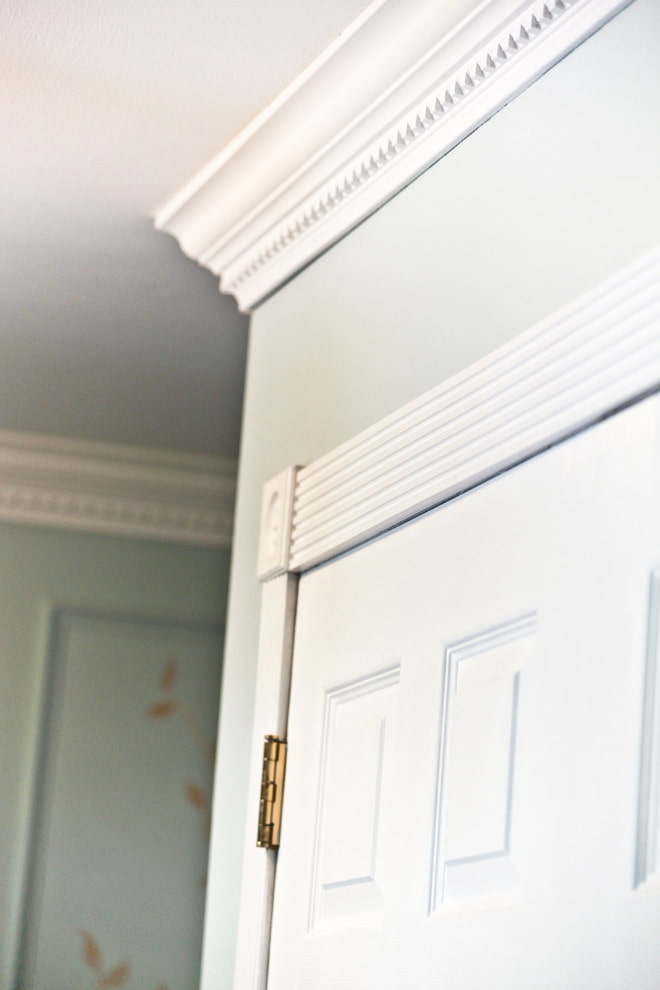
Moldings
They are an overhead strip with a convex texture or ornate decor. Moldings are used to cover the joints of different materials.
They are often used to add relief to classic interiors – this makes empty walls look more voluminous and interesting. Foam moldings can serve as a frame for panels or wallpaper pasted to the wall.
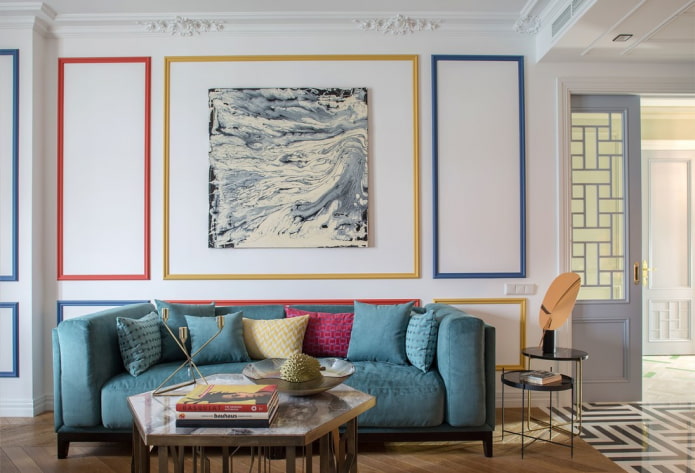
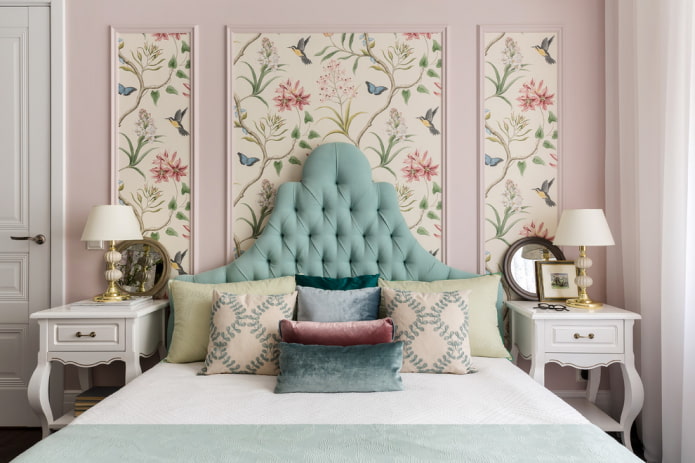
Rosettes on the ceiling
They are installed to advantageously emphasize the chandelier and give the interior a finished look. Rosettes in the form of a circle with picturesque patterns are attached with glue: due to the light weight of the material, the installation of the foam element will not cause difficulties.
The technique is appropriate not only in the classical style, but also in the modern: eclecticism, neoclassicism, fusion, Scandinavian style and even loft.
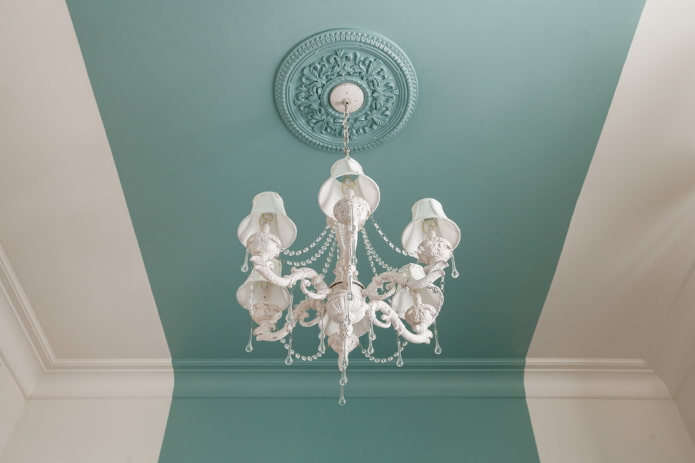
Rosettes on the wall
To create a more original setting, use foam rosettes on the walls – this bold solution will add decorativeness even to the simplest interior. Paint them the same color as the walls or leave them untouched, placing them on a dark background. For installation, use special glue, polyurethane foam or “liquid nails”.
Rosettes look harmonious only on plain walls – they will be lost against the background of wallpaper with patterns.
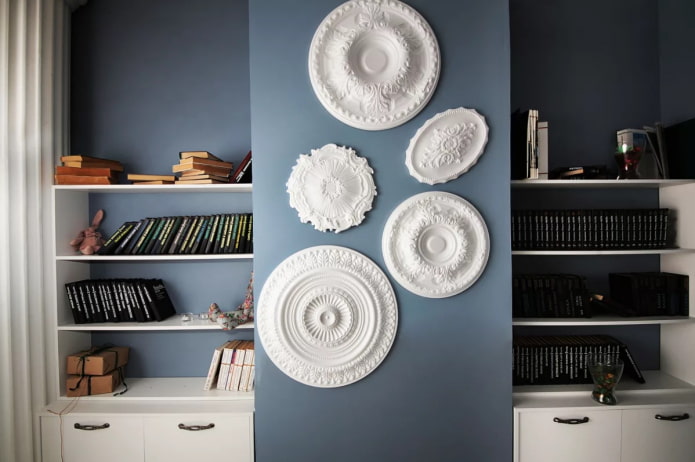
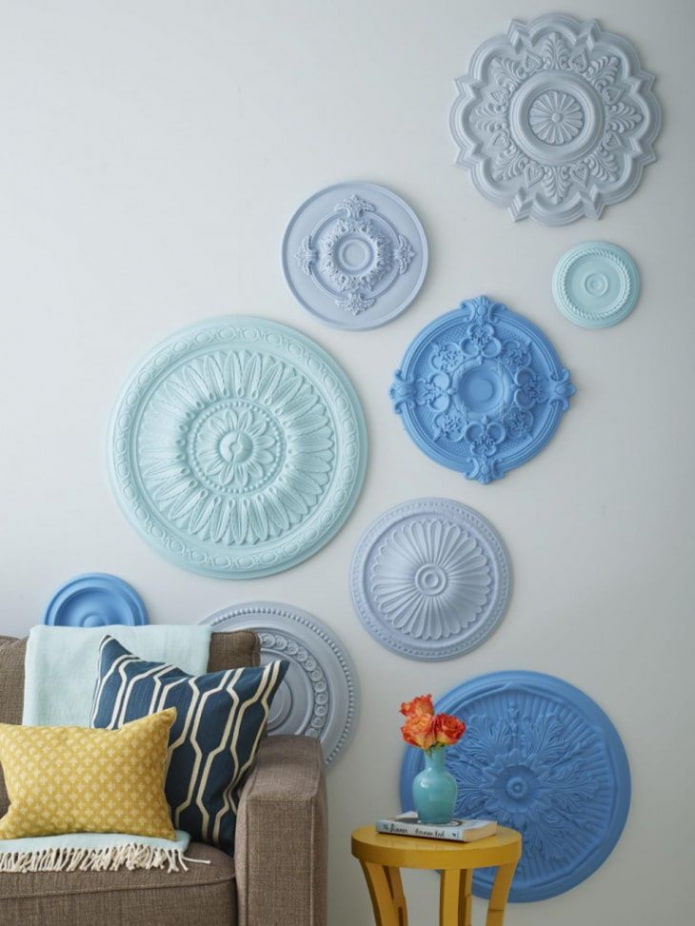
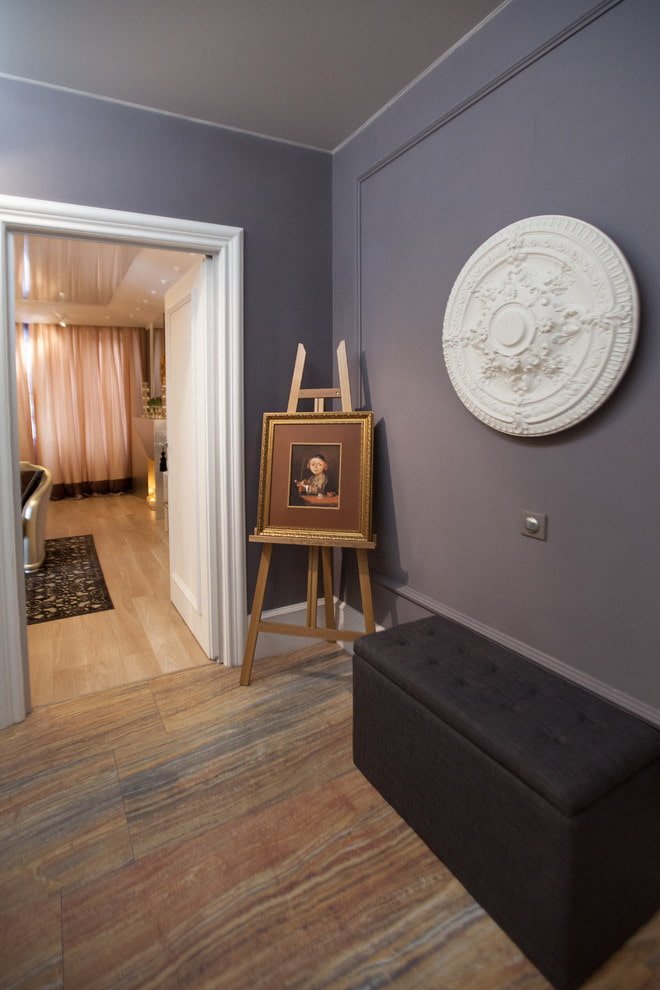
Panels
Foam panels are shaped like square slabs with raised patterns. They are used to decorate the ceiling by gluing the products to the cleaned surface. The tiles can hide minor irregularities and make the ceiling more expressive.
This method of cladding is not used in modern projects – designers prefer to decorate houses with natural materials, and choose the second option between foam and paint.
Wall panels are most often presented with a “brick” texture, but more intricate products can be found in online stores. They are suitable for highlighting an accent wall or niche.
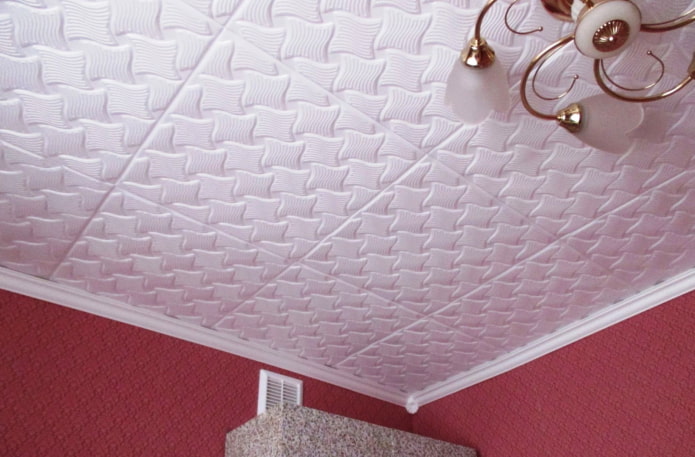
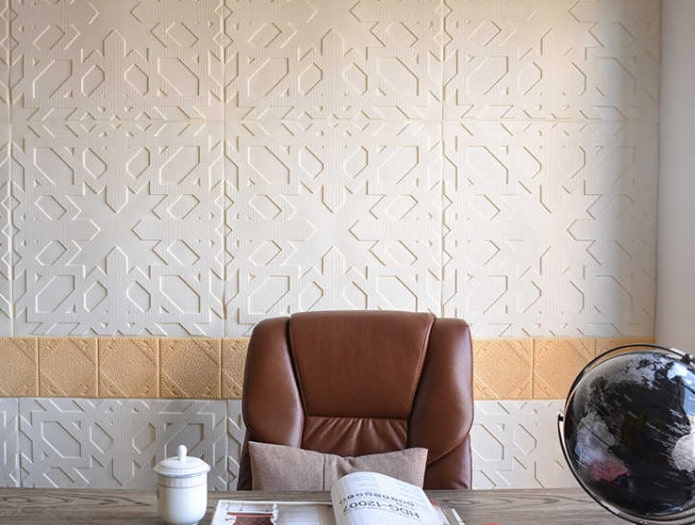
Ornaments
These decorative elements can serve as part of the composition (insert) or act as an independent decoration.
Volumetric patterns located above the door frame will give it an unusual, more elegant look. You can decorate a niche with the help of ornaments, complementing and emphasizing wall sconces.
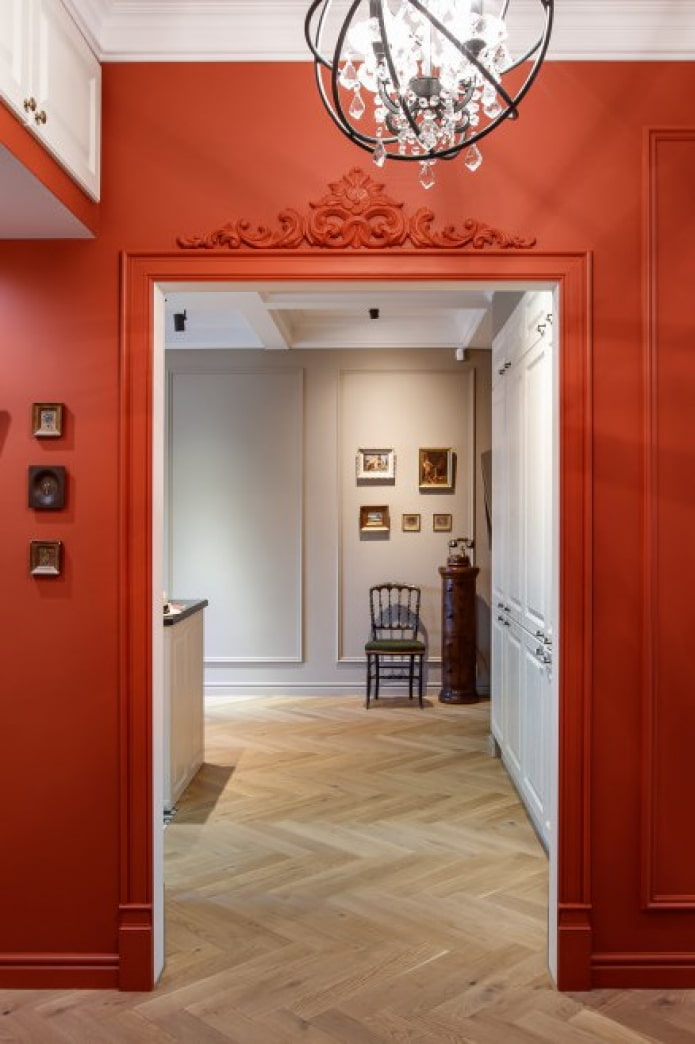
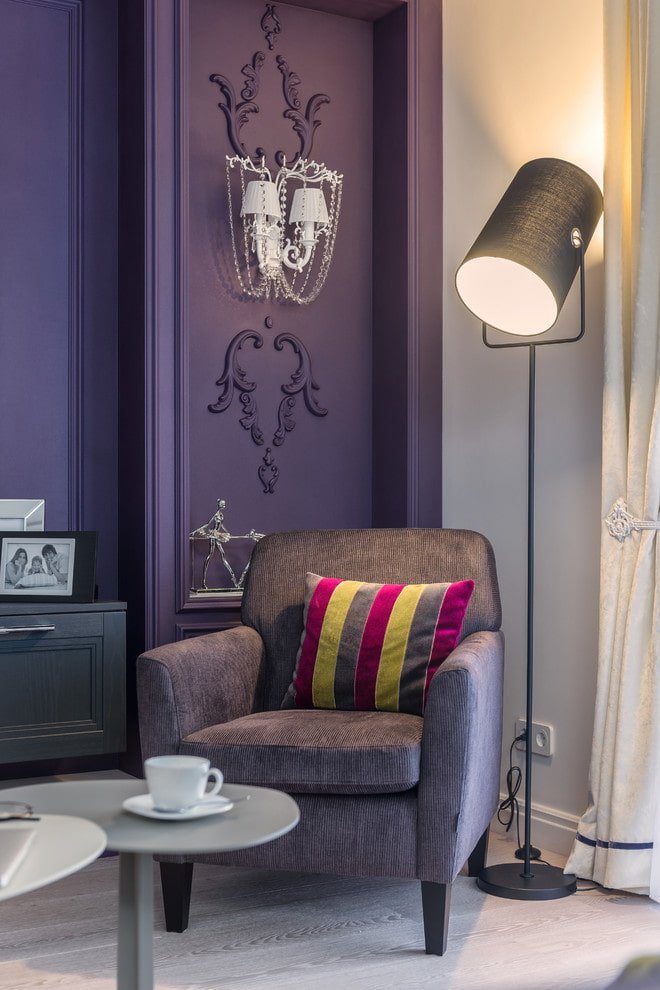
Columns and half-columns
Due to the high cost of architectural columns made of marble and granite, modern designers use more budget-friendly materials, including polystyrene foam, to create analogues. Even a beginner can handle the installation of the product.
Columns and semi-columns are only suitable for decoration, as they are too light. If the ceilings are high, the structures are assembled in parts, gluing them to each other.
If you cover the elements with two layers of putty, foam columns will be indistinguishable from gypsum ones.
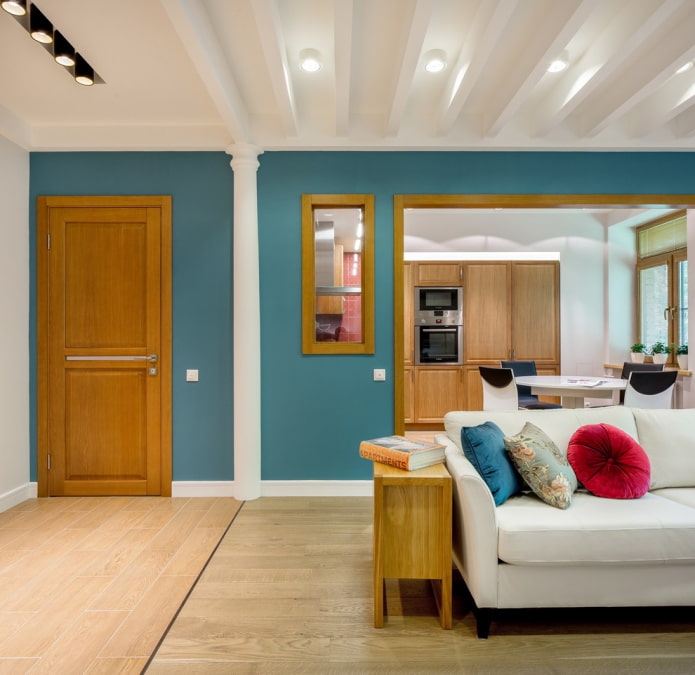
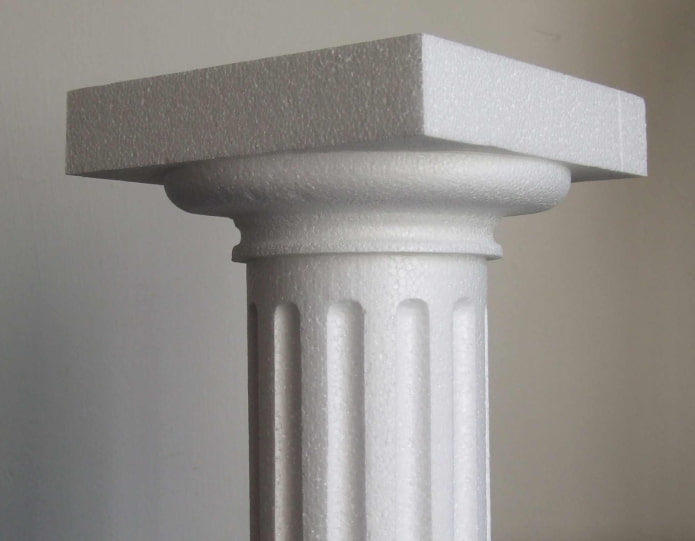
Pilasters
Ornaments similar to a column differ from it in smaller dimensions – pilasters only slightly protrude above the surface of the wall. They make the interior more elegant and at the same time give it grandeur.
They can frame doorways and fireplaces, visually adding height to the room.
Pilasters look luxurious as an addition to furniture, masking the joints of two shelves of a home library.
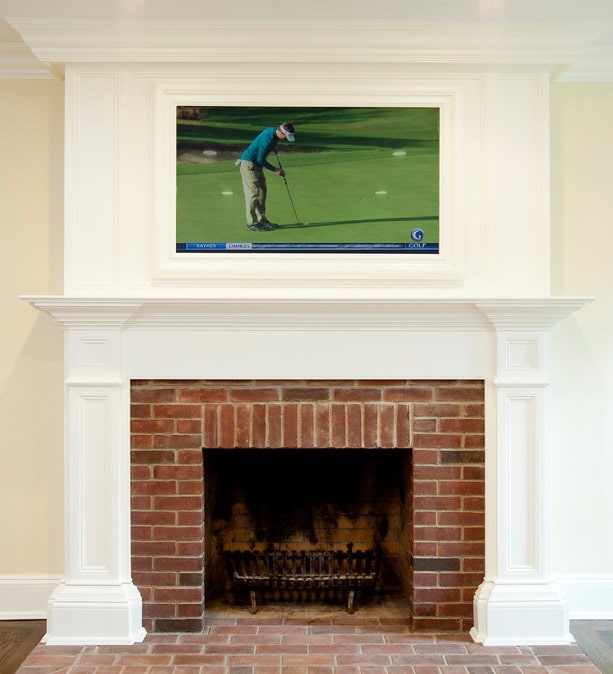
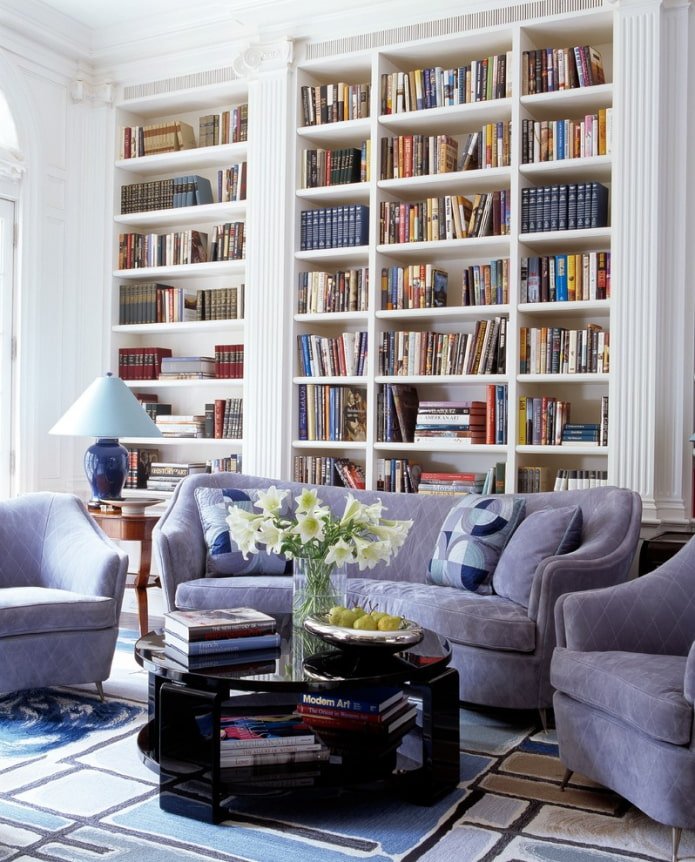
Fireplaces
Additional fireplaces made of polystyrene foam look no less convincing than portals made of plaster. Usually they consist of two supports and an upper element, which is attached to them horizontally.
The lightweight structure can be moved, but due to the fragility of the material, this is not recommended. Fireplace manufacturers warn that the product should be used exclusively for decorative purposes, since polystyrene foam can ignite.
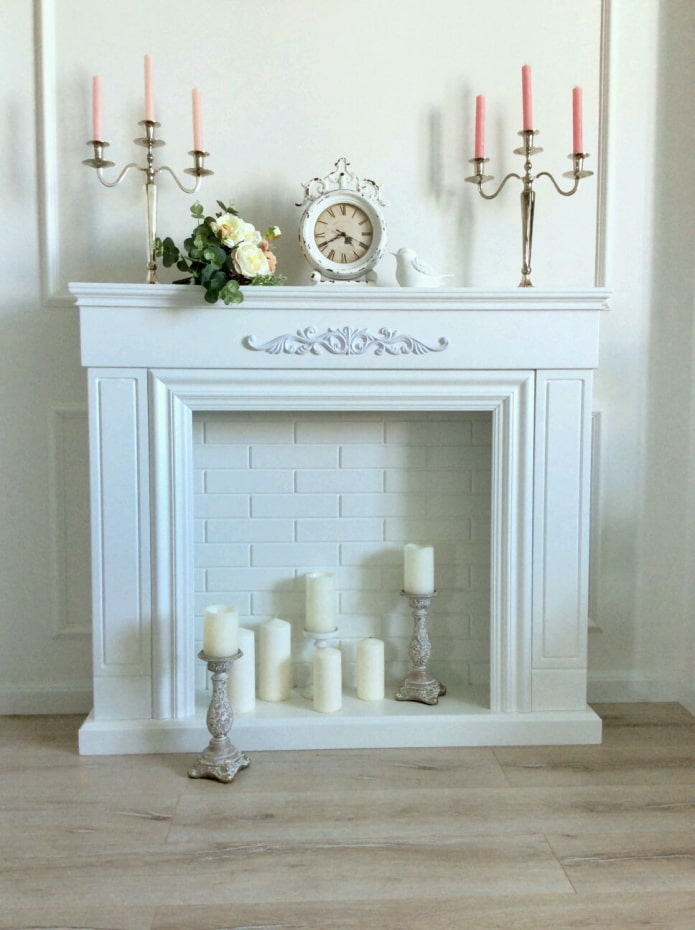

Letters
For a bright interior decor, you can use large foam letters, which are easy to make with your own hands. This is a great solution for decorating a child’s room, decorating holidays or a photo zone. Paint the foam letters with water-based or acrylic paints.
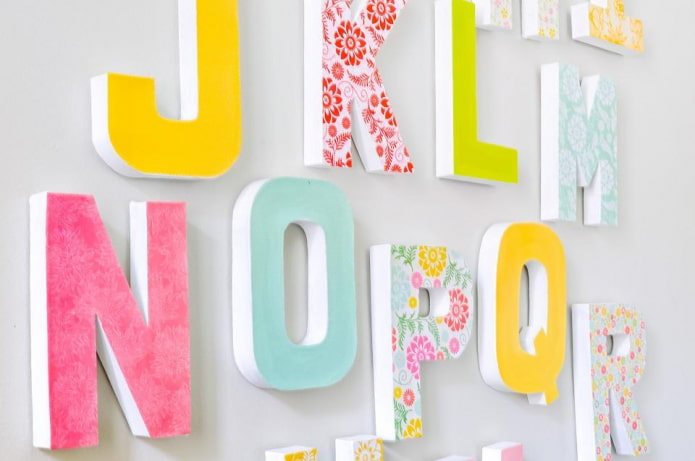
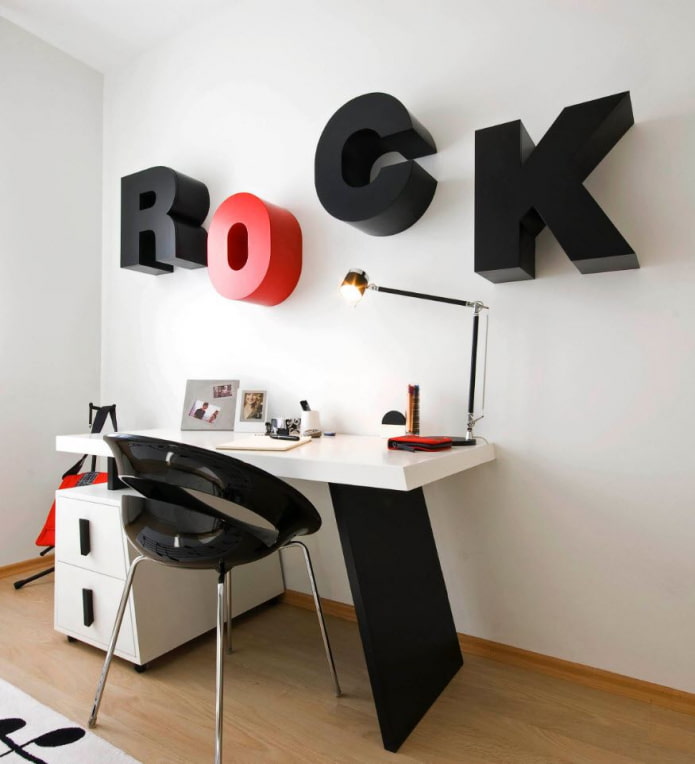
Using decorative foam elements is a convenient and inexpensive way to add uniqueness to your decor. Attach the moldings where they cannot be damaged by household members and beloved pets.
Now reading:
- Ways to improve your apartment according to Feng Shui: tips and recommendations.
- Unique Epoxy Resin Table – Fashion Trend 2020. Complete Guide with Video.
- 10 Ways to Dry Clothes in an Apartment Without a Balcony: 10 Effective Methods
- Creative Solutions for Making Your Own TV Stands.
- What electronics need to be powered off and what doesn’t? – list and reasons.